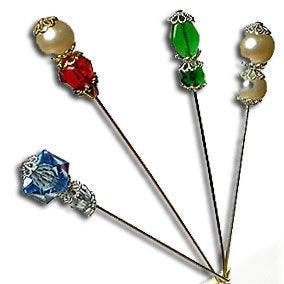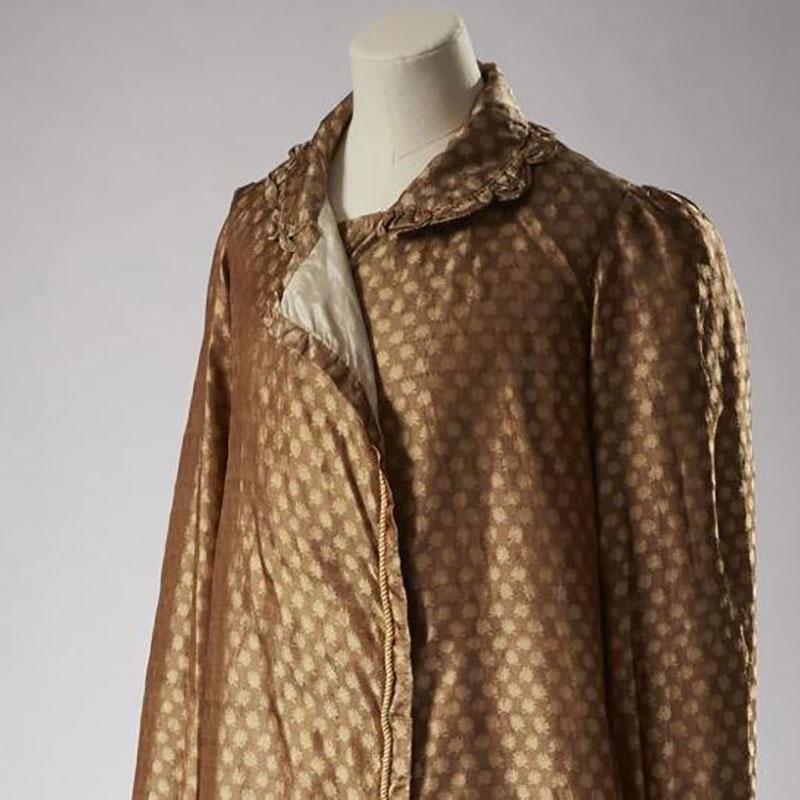Article: Regency Hatpins

Regency Hatpins
As we are quite sure you have noticed, women in the Regency era wore hats and bonnets as a matter of course. They denoted many different things about the wearer, from class, economic prowess, fashionable taste, to one's marital status.
Redecorating or trimming an old hat was a popular topic of conversation between women of all ages and social strata during this period. In a letter to Cassandra dated October 1798, Jane informs her sister that she will soon begin "operations" on her hat, stating that she had just recently "bought some Japan silk". The letter is a delightful read, for Jane goes on to tell Cassandra how she looks forward to altering her hat, stating "on which you know my principal hopes of happiness depend".
Hatpins were sometimes used as a way to redecorate an old hat, but they were generally used more practically to secure a headpiece to the wearer's head. The practice of making hatpins in England began at the turn of the nineteenth century and by the 1820s, they had become incredibly popular. The making of a hatpin was a timely activity and began as a 'cottage industry', meaning that they were made in the home. Hatpin makers struggled to meet the demand for their goods and in 1820, people began to import hatpins from France. In the very same year, the British Parliament passed an act limiting the sale of hatpins to twice a year, on January 1st and 2nd. They feared the effect importing these hatpins would have on the balance of trade, and often women would save up during the year to buy a new hat pin on either of these dates.
Regency style hat pins are hard to come by today and images are in short supply, but the engraving below taken from the Le Bon Genre series, published in 1817, shows a group of young ladies trying on various hats and bonnets. A look at the woman on the far right shows what appears to be a beaded hatpin stuck safely in place waiting for the next hat or bonnet. From the above illustration, it appears that Regency era hatpins were less elaborate than their Victorian successors, featuring one or two beads rather than elaborate trimmings and jewels.

Have you ever used a hatpin? We can imagine they would be very useful indeed for safeguarding one's hat against a gust of wind, quite likely here in England at the moment! Do share with us any instances in which you've come across hatpins, we'd love to hear from you.
We have just added our new Jane Austen Regency Hatpin to our Regency inspired jewellery collection, lovingly hand crafted from sterling silver and set with marcasite.
Sign up to the Jane Austen newsletter for exclusive updates and discounts from our Online Gift Shop.



3 comments
I agree, I have several old pins which are the same length and have the protectors on the ends – I’ve always thought they were lapel pins. They are at least 150 years old.
Chris Forward
I remember that in chapter 2 of Pride & Prejudice, Mr Bennet comments on Lizzie “trimming a hat”, saying that he “hopes Mr Bingley will like it”, and later in the book the scatty Lydia buys a new hat, merely with the intention of pulling it to pieces and re-making it! I wonder how many hatpins the Bennet sisters would have owned between them?
Margaret Mills
That looks more like a lapel pin than a hat pin. I have several hat pins from my great grandmother and they are quite long, 8 – 10 inches. Mine do not have any protective end ‘knob’ but they could have been lost over the years. I also have several lapel pins from various sources and they look similar to the pictured item.
Laurie S Brown
Leave a comment
This site is protected by reCAPTCHA and the Google Privacy Policy and Terms of Service apply.